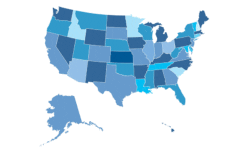Video Can Prove Valuable in Fire Applications
The benefits of video technology are being extended from surveillance and intrusion detection to assisting in fire detection and verification. Find out what considerations, practices and codes figure prominently for successful deployment.

Video surveillance can complement devices such as smoke detectors to verify fire alarms so firefighters will not be needlessy dispatched in the case of a false alarm.
©iStockpoto.com/ Lasse Kristensen
[IMAGE]1787[/IMAGE]
The actual introduction of camera-based fire detection occurred around 2002-2003. The technology has since been expanded to include IP-based cameras.
An example of this includes Fike’s SigniFire system. This system provides high-resolution images along with the detection of the flames and smoke of a fire in progress. And like most other video surveillance systems, you can program it to detect motion.
Manufacturers, however, continue to support the use of analog hardware simply because of the vast number of analog cameras in the field.
Know NFPA’s Rules of the Road for IP
To accommodate this new, exciting method of fire detection, the National Fire Protection Association (NFPA) has adopted a few standards fire alarm technicians must observe when installing video-based fire detection.
According to NFPA 72, 2010, under the heading, Origin and Development of NFPA 72, “Some of the more significant revisions in the 2007 edition addressed protection of fire alarm control units, personnel qualification, heat detector response time, smoke detector spacing, smoke detection in ducts, detectors that use multiple sensing inputs, video image smoke and flame detection, synchronization of visible notification appliances, exit marking audible notification appliances, tactile notification appliances, different types of protected premises fire alarm system, and in-building enhancement systems for firefighter radio communications.”
Section 3.3.252.5 of NFPA 72, 2010, defines Video Image Smoke Detection (VISD) as “The principle of using automatic analysis of real-time video images to detect the presence of smoke.”
According to NFPA, there are two flavors of video detection: Video Image Flame Detection (VIFD) under Section 3.3.289, and Video Image Smoke Detection (VISD) under Section 3.3.290.
Knowing the right terminology is important, and a review of NFPA 72, 2010, is the answer. This national code set will also provide valuable input on when, when not to and how to use video-based detection.
NFPA Code Dictates Connections
Before you begin using any fire alarm device new to the marketplace, it’s important to verify that it is listed for its designated purpose by an accredited third-party testing/listing service, such as UL.
“Video image smoke detection systems shall comply with all of the applicable requirements of Chapters 1, 10, 14, 17, and 23 of this Code” (Section 17.7.7.2, NFPA 72, 2010).
NFPA codes act hand-in-hand with UL standards to assure proper functionality during fire events. For example, NFPA 72 allows video data to be used for security and other purposes. But these connections must be separate and apart from the primary fire detection function. In practice this usually means a separate feed-through BNC or data output on the main f
ire-listed DVR.
According to Section 17.7.7.3, NFPA 72, 2010, “Video signals generated by cameras that are components of video image smoke detection systems shall be permitted to be transmitted to other systems for other uses only through output connections provided specifically for that purpose by the video system manufacturer.”
In other words, your camera connections must directly connect to the fire-listed DVR before video can be channeled elsewhere for any other purpose.
In addition, according to Section 17.7.7.4, “All component controls and software shall be protected from unauthorized changes. All changes to the software or component settings shall be tested in accordance with Chapter 14.”
In most instances this is accomplished by the use of a simple cover over the controls, secured by a cam lock.
For additional information on video-based fire alarm detection, be sure to review all relevant portions of NFPA 72, 2010 Edition (nfpa.org).
Al Colombo is an award-winning writer who has covered electronic security and life safety since 1986. Visit his Web site at www.alcolombo.info.
Related Articles:
- Video Surveillance Best Practices: What Works
- Your IP Video Surveillance Cheat Sheet
- Incorporating Mass Notification Into New Fire Alarm Systems
- 7 Steps to Reducing False Fire Alarms
If you appreciated this article and want to receive more valuable industry content like this, click here to sign up for our FREE digital newsletters!
 Leading in Turbulent Times: Effective Campus Public Safety Leadership for the 21st Century
Leading in Turbulent Times: Effective Campus Public Safety Leadership for the 21st Century
This new webcast will discuss how campus public safety leaders can effectively incorporate Clery Act, Title IX, customer service, “helicopter” parents, emergency notification, town-gown relationships, brand management, Greek Life, student recruitment, faculty, and more into their roles and develop the necessary skills to successfully lead their departments. Register today to attend this free webcast!







